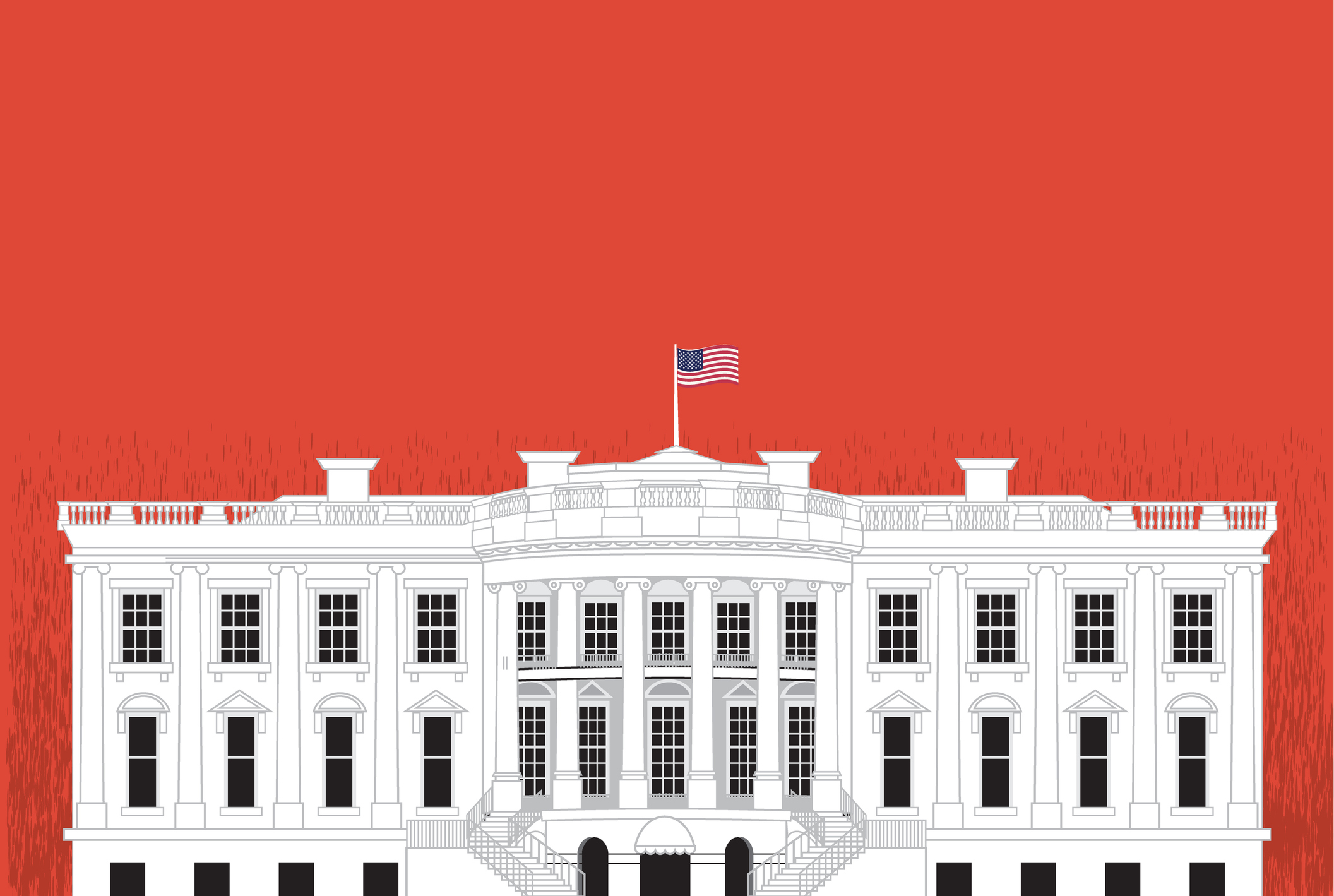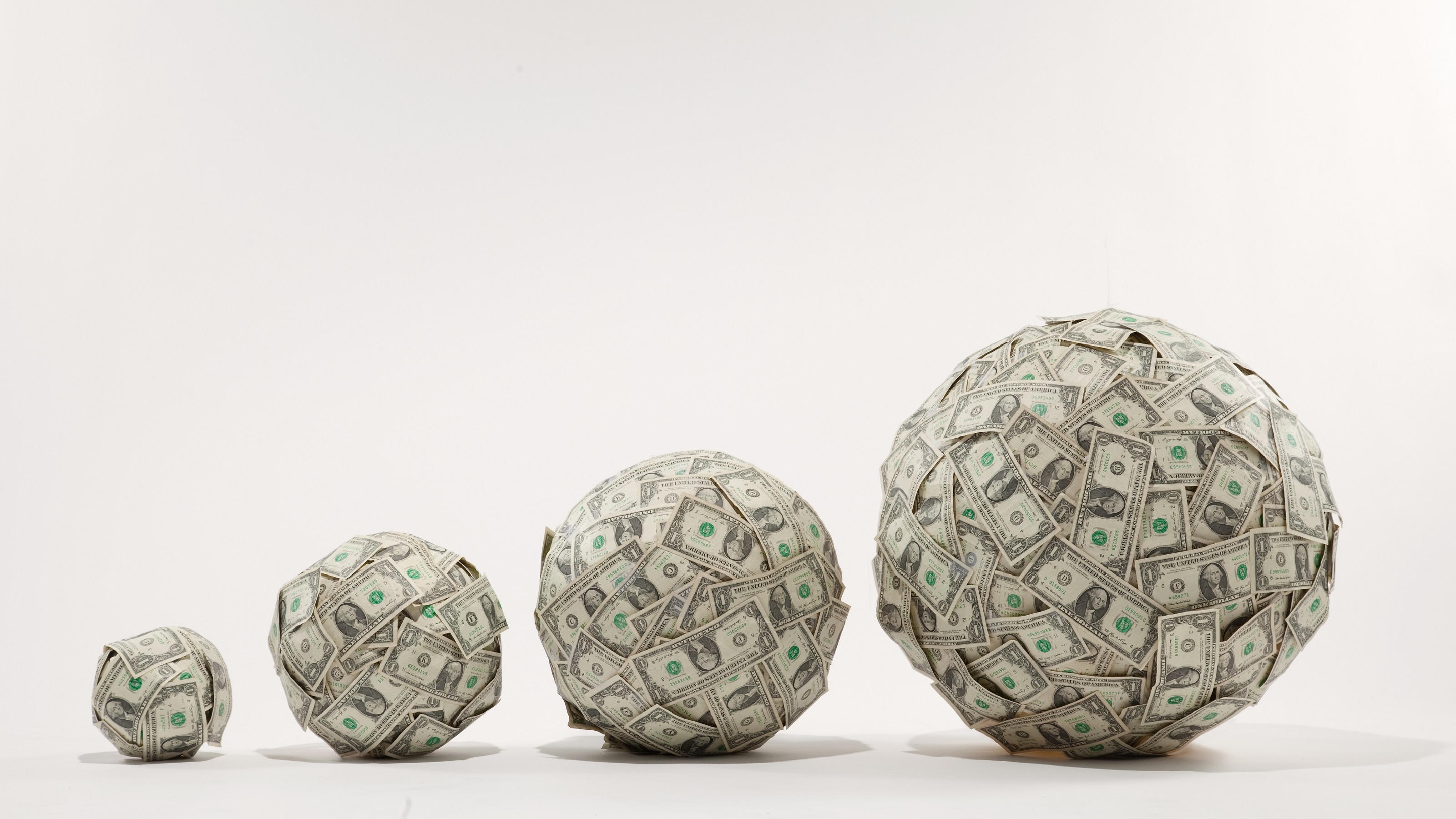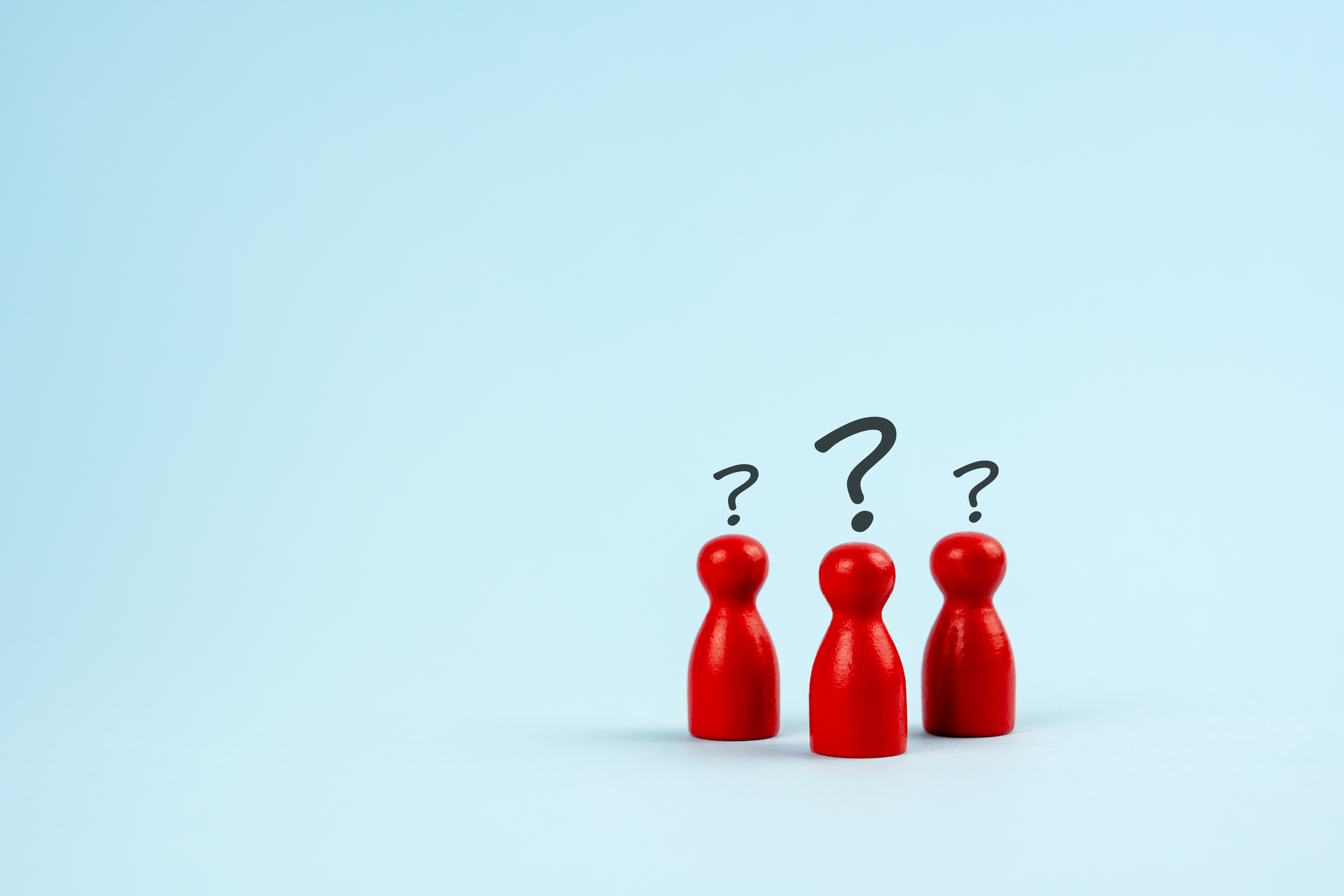Trump 2025 Tax Bill: What’s Changing and How It Affects Your Taxes
From standard deduction amounts to tax brackets and Medicaid cuts, here’s what individual filers need to know about tax changes in Trump's so called "big beautiful bill."


Have you heard about the 2025 tax and spending megabill that President Donald Trump signed into law on July 4?
This new law (Public Law 119-21 and referred to by Trump as the “big, beautiful bill”) reshapes many tax rules that individuals rely on. But understanding the various changes and their implications for taxpayers can be confusing.
Essentially, the tax bill extends many of the lower tax rates and increased standard deduction base amounts from the 2017 Tax Cuts and Jobs Act (TCJA), which was enacted during Trump's first term. As a result, some concerns about "tax cliffs"— key provisions initially set to expire at the end of this year — have been alleviated.
From just $107.88 $24.99 for Kiplinger Personal Finance
Become a smarter, better informed investor. Subscribe from just $107.88 $24.99, plus get up to 4 Special Issues

Sign up for Kiplinger’s Free Newsletters
Profit and prosper with the best of expert advice on investing, taxes, retirement, personal finance and more - straight to your e-mail.
Profit and prosper with the best of expert advice - straight to your e-mail.
The legislation introduces several new temporary tax deductions and credits, including those related to tips and overtime pay. However, the bill also eliminates or plans to phase out certain incentives, including the federal EV tax credit and other clean energy credits.
Some changes are effective as of this year (affecting returns typically filed in early 2026), while others don't come into play until 2026 (impacting returns filed in early 2027).
- Cost-wise, the Congressional Budget Office (CBO) projects that this law will increase federal deficits by approximately $4.1 trillion over the next decade. That includes about $700 billion in added interest costs on federal debt.
- And...the law introduces substantial cuts to Medicaid and the Supplemental Nutrition Assistance Program (SNAP, formerly known as food stamps), which provide health and food support to millions of people in the United States.
Yes. It’s a lot to digest. But we’ll dive into many of the changes in more detail below, beginning with some key points.
'Big Beautiful Bill' Tax Cuts
Trump tax bill summary
Congress passed the massive bill using the budget reconciliation process. That approach allows a single party, in this case, Republicans, to approve certain legislation with a simple majority.
GOP members in the U.S. Senate narrowly approved the bill after a tie-breaking vote from Vice President JD Vance. Republicans in the U.S. House of Representatives also approved the bill along party lines.
The megalegislation is considered by many Republicans to be the signature fiscal effort of Trump's second term. Here's an overview of some key tax provisions.
- The seven tax brackets and their lowered rates stay put for now, so taxpayers won’t suddenly see higher income tax rates creep back up after 2025.
- Similarly, the standard deduction remains nearly double what it was before 2017 and will continue to be adjusted each year for inflation. (For 2025, that’s $15,750 for singles and over $31,000 for couples filing jointly.)
Also, according to separate analyses by the CBO and the Joint Committee on Taxation (JCT), the benefits from this tax law aren’t spread evenly.
People with higher incomes are expected to receive the most significant tax breaks, while many lower-income households may actually see their overall resources decrease.
Middle-income families may experience small gains or losses, depending on their individual circumstances.

Other key points:
- The State and local tax (SALT) deduction cap, which limits how much you can deduct for state and local taxes, rises sharply (subject to income limits) from $10,000 to $40,000 for 2025 and stays elevated through 2029 before dropping back in 2030.
- New temporary deductions allow taxpayers to deduct interest on car loans for new U.S.-assembled vehicles (up to $10,000 per year) purchased after 2024, with income phaseouts and expiration at the end of 2028.
- Employees in traditionally tipped jobs, as specified by the U.S. Treasury and IRS, can exclude up to $25,000 in tips from federal income tax through 2028, subject to income limits and specific eligibility requirements.
- Overtime pay up to $12,500 (or $25,000 for joint filers) can be deducted in the same period, again with income phaseouts.
- The federal Child Tax Credit of $2,200 per child remains, but requires a valid Social Security number.
- New child savings accounts (called "Trump accounts") start with a $1,000 federal deposit for kids born in 2025–2028 and allow further yearly contributions subject to limits and rules.
- Increased estate tax exemption, raising the threshold to $15 million beginning in 2026, indexed to inflation.
- Meanwhile, Medicaid and SNAP funding take significant hits, resulting in reduced eligibility or enrollment, increased work requirements, and lower funding levels. Some expect millions to lose healthcare coverage or food assistance because of those program cuts.
Here’s more of what you need to know about those provisions and how they could impact your taxes.
What’s In Trump's Tax Bill?

Note: This is not an all-inclusive list of individual tax changes in the massive bill.
Extended individual TCJA provisions
As mentioned, the new mega reconciliation legislation extends the TCJA’s seven individual income tax rates and brackets. So taxpayers avoid the “tax cliff” rate increases that were set to take effect after 2025 if Congress hadn’t acted.
For more information, see: 2025-2026 Federal Tax Brackets and Income Tax Rates.
The 2025 GOP tax bill also maintains the nearly doubled base standard deduction, which for 2025 is approximately $15,750 for single filers and $31,500 for married joint filers, indexed for inflation annually.
Related: 2025 Standard Deduction Changes to Know Now
Tax Feature | Pre-2025 Rules | 2025 GOP Tax Bill Changes |
|---|---|---|
Individual Income Tax Rates | TCJA rates and brackets were set to expire after 2025 | TCJA's seven individual income tax rates extended |
Standard Deduction | Nearly double under the 2017 TCJA | Maintains the nearly doubled base standard deduction form prior law, indexed annual for inflation |
Personal Exemptions | Repealed under TCJA | Remain Repealed |
Estate tax exemption increase
The lifetime estate and gift tax exemption was scheduled to be reduced by half in 2026 due to looming Tax Cuts and Jobs Act (TCJA) expirations.
However, under the 2025 tax bill, the lifetime estate and gift exemption increases, as of January 1, 2026, to $15 million ($30 million for married couples).
Meanwhile, gifts given before 2026 benefit from the already-high 2017 tax exemption.
Learn More: What's the New Estate Tax Exemption Amount for 2026?
SALT deduction cap change
The SALT deduction cap is raised from $10,000 to $40,000 for the years 2025 through 2029.
As a result, taxpayers who itemize deductions can deduct a larger amount of state and local taxes (including income, sales, and property taxes) from their federal taxable income.
This cap increases by 1% annually during that period but phases out for taxpayers with modified adjusted gross income (MAGI) exceeding $500,000, returning fully to $10,000 for all taxpayers starting in 2030.
Related: SALT Deduction: Three Things to Know
Aspect | Old SALT Deduction Limit | New SALT Deduction Cap |
|---|---|---|
Deduction Cap | $10,000 | $40,000 |
Effective Year | 2018-2024 | 2025-2029 |
Income Threshold for Full Limit | No specific thresholds | Under $500,000 MAGI |
Phase-out for Higher Income | N/A | Gradual reduction above $500,000 MAGI |
Reversion Year | N/A | 2030: Cap reverts to $10,000 |
New Tax Deductions

Several new deductions included in the tax and spending bill are temporary.
Car loan Interest deduction
Taxpayers may deduct interest on car loans up to $10,000 per year for new qualifying vehicles assembled in the U.S., purchased after December 31, 2024. So eligible buyers may be able to reduce their overall tax liability without itemizing deductions.
The tax break applies to passenger cars, light trucks, SUVs, and motorcycles used for personal purposes.
- The deduction phases out 20% annually beginning at $100,000 MAGI for single filers and $200,000 MAGI for joint filers, with full phaseout at $150,000 and $250,000, respectively.
- Vehicle Identification Numbers (VINs) are required on tax returns.
- This deduction expires December 31, 2028.
Learn More: New Car Loan Interest Deduction: Which Buyers and Cars Qualify
'No tax on tips' deduction
Employees in traditional tipping occupations (e.g., servers, bartenders, salon workers) may exclude up to $25,000 in tips earned from federal income tax for tax years 2025–2028.
That essentially means eligible tipped workers might keep more of their earnings by paying less in federal income taxes on tips they earn through 2028. But...
- Income phaseouts start at $150,000 (single) and $300,000 (joint).
- Self-employed individuals in tipped trades are excluded.
- Payroll and state taxes still apply to tips.
See: No Tax on Tips Approved: What You Need to Know for more information.
Overtime pay tax deduction
A deduction for overtime pay of up to $12,500 (single) and $25,000 (joint) is allowed from 2025 to 2028, subject to the same income phaseouts as the deduction for qualified tip income.
See What's Happening With Taxes on Overtime Pay? for more information.
Targeted Tax Breaks
Child Tax Credit under Trump tax law
- The Child Tax Credit (CTC) maximum is $2,200 per qualifying child, indexed to inflation starting in 2026. The refundable portion of the credit is capped at $1,700 per child.
- Valid Social Security Numbers are required for taxpayers and dependents to claim the credit.
Feature | Prior Law | New Rules under 2025 Trump Tax Law |
|---|---|---|
Credit Amount Per Eligible Child | $2,000 | $2,200 (indexed to Inflation Starting in 2026) |
Refundable Portion | Up to $1,700 per child | Capped at $1,700 |
Phaseout Thresholds | $200,000 single/$400,000 joint | Maintains same phaseouts |
Social Security Number Requirement | Child must have SSN, parent filing can use an ITIN | Taxpayers and dependents must each have valid SSNs |
To learn more, see: Child Tax Credit 2025-2026: How Much Is It?
‘Trump Account’ for kids
New tax-exempt “Trump accounts” receive a government-seeded $1,000 for children born between 2025 and 2028, with additional non-deductible contributions capped at $5,000 per year. These funds, after age 18, can be used for education, home purchase, or retirement purposes.
For more information, see: The GOP Wants to Auto-Enroll Your Child in a Trump Savings Account.
‘Senior’ Bonus Deduction (65+)
Taxpayers over age 65 receive a bonus $6,000 deduction through 2028, phased out starting for incomes above $75,000 (single) and $150,000 (joint).
The deduction is available for eligible taxpayers whether you itemize or take the standard deduction.
For more information, see our report: New $6,000 Bonus Deduction: What It Means for Taxpayers Over Age 65.
Other Key Tax Changes

1099-K threshold reporting
The GOP tax and spending bill brings back higher thresholds for 1099-K reporting from payment apps like (but not limited to) PayPal, Venmo, Cash App, Etsy, StubHub, eBay, and Airbnb.
So, for payments you receive for 2025 (sent to you in early 2026), you should only receive a Form 1099-K if:
- You receive more than $20,000 in gross payments and
- You conduct more than 200 transactions on a single platform within a year.
For more information, see: Another IRS 1099-K Threshold Change to Know for Your 2025 Taxes.
Health Savings Account (HSA) changes
- For HSAs, the 2025 tax law expands eligibility by allowing individuals enrolled in Bronze or Catastrophic Affordable Care Act (ACA) plans to contribute starting in 2026.
- It also permanently allows telehealth services and direct primary care fees to qualify as HSA expenses, broadening the types of healthcare costs that HSAs can cover.
However, other reforms like expanding eligibility for Medicare enrollees weren’t included.
What this means for most: HSAs largely retain their prior features, including triple tax advantages on contributions, growth, and qualified withdrawals.
Feature | Pre-2025 Tax Bill Rule | New Rule Starting in 2026 |
|---|---|---|
Eligibility | Only High Deductible Health Plans (HDHPs), excludes ACA Bronze or Catastrophic plans | Includes ACA Bronze and Catastrophic plans as eligible HDHPs |
Qualified Expenses | Includes typical medical expenses, excludes telehealth fees and direct primary care fees | Includes telehealth and direct primary care fees as HSA-eligible expenses |
Expansion | Did not include Medicare expenses | Medicare enrollees still not eligible for HSAs |
Tax Benefits | Triple tax advantage (contribution, growth and withdrawal) | Triple tax advantage unchanged |
Student loan changes under Trump
Though not tax-related, the Trump tax and spending bill also introduces a significant overhaul of federal student loan programs.
Popular income-driven repayment plans initiated under the Biden administration will be phased out, borrowing for graduate students and parents will be restricted, and some options for deferment due to economic hardship or unemployment will be eliminated.
Though recent news reports indicate that the Trump administration might follow through with processing student loan forgiveness under certain Biden-era programs.
There's more. While the pandemic-era American Rescue Plan Act (ARPA) excluded forgiven student loan amounts from federal taxable income through 2025, the Trump/GOP tax and spending bill doesn't extend that exclusion.
That means, unless Congress acts, student loan debt forgiven after December 31, 2025, will once again be considered taxable income at the federal level.
That could leave borrowers who were counting on PSLF or other forgiveness programs facing an unexpected tax bill.
For more information, see: How Taxes and Student Loan Repayment Could Soon Change Under Trump.
Ending clean energy tax credits
The new tax law delivers a major shake-up to federal clean energy incentives, setting expiration dates for popular tax credits.
Homeowners planning to install rooftop solar or battery storage have until December 31, 2025, to qualify for the 30% residential solar tax credit; after that, the credit will disappear.
To learn more, see: Homeowners Rush to Install Solar Panels.
Electric vehicle buyers face an even tighter window. The federal EV tax credit for new, used, and commercial clean vehicles ended for vehicles acquired and put into service after September 30, 2025.
For more information, see How the EV Tax Credit Works.
The credit for installing home EV chargers remains in effect for a period of time, expiring for equipment placed in service after June 30, 2026.
With these deadlines, some analysts say the law is expected to slow the momentum of clean energy adoption and raise the cost barrier for solar and EV upgrades.
Business provisions in the Trump tax bill
The Trump/GOP tax and spending bill impacts businesses as well. Some key changes include:
- Permanent 20% small business deduction for pass-through entities like partnerships and sole proprietorships.
- Permanent 100% bonus depreciation and full expensing for business investments.
(A permanent lower corporate tax rate, initially set by the 2017 TCJA, remains.) Other key business provisions are summarized in the following table.
Provision | Description | Effective Date |
|---|---|---|
Bonus Depreciation | Permanent 100% bonus depreciation on qualified property placed in service after 1/19/2025 | January 20, 2025 |
Qualified Business Income Deduction (Section 199A) | Made permanent with increased deduction rate to 23%, and modified phase-in thresholds | Effective as of 2025 tax year |
Qualified Small Business Stock Gains | Increased exclusion limits and phase-in for gains exclusion based on holding period and asset thresholds | 2025 tax year onward |
Health Care and Food Benefit Cuts

Medicaid cuts and rule changes
The bill enacts the most sweeping cuts to Medicaid since the program’s 1965 inception.
The legislation reduces Medicaid funding by roughly 18% over a decade — about $600 to $800 billion according to the Congressional Budget Office (CBO) — through a combination of new eligibility restrictions, asset tests, and work requirements.
- Most adults, including parents of children age 14 and older, will need to work at least 80 hours a month to keep coverage, with some exceptions.
- States will be required to reassess eligibility every six months, rather than annually.
- States could also impose co-pays up to 5% of household income and require monthly income verification.
The CBO estimates that 10 million to 12 million people could lose Medicaid coverage over the next 10 years, with additional losses expected from tighter Affordable Care Act enrollment rules.
The impact is expected to fall hardest on families with low incomes, people with disabilities and rural residents.
SNAP: Shrinking food assistance benefits
The bill’s approach to the Supplemental Nutrition Assistance Program (SNAP) is equally notable.
SNAP program funding (formerly known as food stamps) will be cut by about 20%, an estimated $230 billion over 10 years.
- Work requirements are expanded to cover adults up to age 64 (up from 50), and parents with children age 14 and older.
- States will be required to shoulder a greater share of SNAP costs or risk losing federal support entirely.
Many family advocates say these changes threaten to push millions into food insecurity, especially older workers and families in high-unemployment areas.
For more information, see Medicaid and SNAP Benefits at Risk Under Trump’s Tax Bill.
Program | Spending Reduction | Key Changes and Effects | Projected Impact |
|---|---|---|---|
Medicaid | ~$863 billion | New work and reporting requirements, eligibility restrictions, cost-sharing increases, immigrant coverage changes, and lower reimbursement rates | An estimated 10.9 million people losing coverage, with a disproportionate impact on rural and vulnerable populations |
SNAP | ~$295 billion | Cuts to administrative funds, tightened eligibility, new state cost-sharing based on payment error rates, and reduced benefit growth tied to Thrifty Food Plan cost | Reduced food assistance for low-income families; able-bodied veterans aged 18-64 lose their previous work exemption, risking food aid loss for about 1.2 million veterans |
More Tax Changes Coming in 2026

Gambling losses tax deduction change
Starting in 2026, the new law limits gamblers to deducting only 90% of their losses against their gambling winnings. Previously, you could deduct 100% of your losses up to your winnings, meaning you weren’t taxed on net-zero or losing years.
This change will apply to all gamblers and related gambling expenses. However, as Kiplinger has reported, several bills have been introduced proposing to reverse this, so stay tuned.
To learn more, see: Gambling Loss Deduction Limit Sparks Debate.
Aspect | Old Rule (Through 2025) | New Rule (Starting 2026) |
|---|---|---|
Gambling Loss Deduction | 100% of losses are deductible up to winnings | Only 90% of losses are deductible up to winnings |
Tax Effect if Break-Even | No taxable income (losses fully offset wins) | Taxable income on 10% of losses, even if break-even |
Charitable donation tax deduction
Under the new tax law, a significant change has been introduced to charitable giving incentives.
- Starting in 2026, individuals who claim the standard deduction will be able to deduct up to $1,000 annually for single filers and $2,000 for joint filers in cash donations to qualified charitable organizations.
- Previously, only those who itemized deductions could benefit from the charitable donation tax deduction.
Additionally, for high-income taxpayers in the 37% tax bracket, the value of charitable deductions has been capped at 35%, meaning they can receive a maximum of $0.35 in tax savings for every $1.00 donated. This change will be effective starting in 2026.
Feature | Before 2026 | Starting in 2026 |
|---|---|---|
Charitable Deduction for Non-Itemizers | Not allowed | Allowed up to $1,000 for single filers and $2,000 for joint filers (cash donations only) |
Charitable Deduction Floor for Itemizers | No floor on deductible gifts | Must exceed 0.5% of Adjusted Gross Income (AGI) to be deductible |
Cap on Deduction Value for High-Income Taxpayers (37% bracket) | Full value at 37% tax rate | Capped at 35% tax savings per $1 donated (max $0.35 per $1) |
Donations to Donor-Advised Funds (DAFs) and Private Foundations | Fully deductible (if itemizing) | Excluded from the new non-itemizer deduction |
For more information, see: Charitable Donation Tax Deduction: What to Know.
ACA Tax Credit expiration
Unless Congress acts, the premium tax credit subsidies under for Affordable Care Act (ACA) marketplace plans will expire after December 31, 2025.
- Congress originally expanded these premium tax credits during the pandemic in 2021 and later extended them through the end of 2025.
- They substantially lower health insurance costs for more than 24 million people in the U.S., or roughly 7% of the population.
- Data show the tax credits have helped make coverage more affordable for a range of people, including the self-employed, small business owners, and those who lack access to employer or other coverage.
As Kiplinger has reported, whether the credits will be extended is at the heart of the current government shutdown battle.
For more information, see: Health Care Tax Credits and the 2025 Government Shutdown.
Deficit and Impact
The fiscal impact of the GOP tax bill

Proponents argue the bill’s tax cuts and spending changes will boost growth and jobs. But the numbers tell a more complicated story.
The CBO projects the bill will add about $3.3 trillion to the national debt over 10 years, even after accounting for the spending reductions and new revenue measures.
Other independent estimates, which factor in the interest on that additional debt, put the true cost closer to $4.5 trillion or more over a decade.
Public Perception
Who benefits from Trump's tax bill?
A Tax Foundation analysis shows the largest tax cuts will go to households earning above $400,000. The top 1% would receive a disproportionate share of benefits compared with those making under $100,000.
- Data show that most tax benefits will go to wealthier taxpayers, with the top 10% receiving approximately 80% of the total tax breaks.
- Meanwhile, lower-income Americans generally see fewer gains — or even lose resources — especially when cuts to Medicaid and food assistance programs like SNAP are taken into account.
- Middle-income families are expected to experience mixed results, depending on their individual circumstances.
What the polls say about the tax bill
What about the public? Some public skepticism was reflected in a CBS News/YouGov poll conducted in early June. About 47% of respondents said the bill would hurt the middle class, 54% believed it would negatively affect low-income people, and 60% expected the wealthy to benefit most.
More recent polling also shows public opinion is generally running against the bill.
According to a recent Pew Research Center poll, only 27% of Americans believe the big bill will help people like them, while 51% think it will hurt the middle class.
A Kaiser Family Foundation’s survey echoes those concerns: 56% of respondents say they are “very worried” or “somewhat worried” that the bill’s benefits will primarily go to the wealthy and corporations, rather than to ordinary families.

Because the megabill was passed by the GOP without Democratic support, the law has added to political divisions.
- Many are concerned about the hardship Medicaid and SNAP cuts could bring to vulnerable populations.
- New deductions for tips, overtime pay, and car loan interest may help some taxpayers but add complexity to filing.
- Some environmental advocacy groups criticize the rollback of clean energy tax credits.
Republican lawmakers have focused on aspects of the law they believe support working families, while Democratic lawmakers often point to the high price tag and loss of medical insurance and care for millions.
Trump tax bill 2025: Bottom line
Understanding the fine print in the new tax law — including exactly which deductions expire when and income thresholds for phaseouts — can help you better prepare your finances and tax filings in the years ahead.
As always, consult a trusted and qualified tax professional or financial planner who can guide you and devise a strategy that fits your situation and goals.
This article has been updated to provide additional information about student loans.
Read More
- Ten Tax Breaks for Middle-Class Families in 2025
- New Tax Rules: Income the IRS Won't Touch
- What's the 2025 Standard Deduction?
- New 2026 Income Tax Brackets Are Set: What to Know
Profit and prosper with the best of Kiplinger's advice on investing, taxes, retirement, personal finance and much more. Delivered daily. Enter your email in the box and click Sign Me Up.

Kelley R. Taylor is the senior tax editor at Kiplinger.com, where she breaks down federal and state tax rules and news to help readers navigate their finances with confidence. A corporate attorney and business journalist with more than 20 years of experience, Kelley has covered issues ranging from partnerships, carried interest, compensation and benefits, and tax‑exempt organizations to RMDs, capital gains taxes, and income tax brackets. Her award‑winning work has been featured in numerous national and specialty publications.
-
 Changes Are Coming for This Invesco Bond Fund
Changes Are Coming for This Invesco Bond FundThe Invesco BulletShares 2026 Corporate Bond ETF's bonds will mature in 2026. Here's what investors should do.
-
 What Science Reveals About Money and a Happy Retirement
What Science Reveals About Money and a Happy RetirementWhether you’re still planning or already retired, these research-based insights point the way to your best post-work life.
-
 7 Retirement Planning Trends: What They Mean for You in 2026
7 Retirement Planning Trends: What They Mean for You in 2026From government shutdowns to market swings, the past 12 months have been nothing if not eventful. The key trends can help you improve your own financial plan.
-
 Retirees in These 7 States Could Pay Less Property Taxes Next Year
Retirees in These 7 States Could Pay Less Property Taxes Next YearState Taxes Retirement property tax bills could be up to 65% cheaper for some older adults in 2026. Do you qualify?
-
 Estate Tax Quiz: Can You Pass the Test on the 40% Federal Rate?
Estate Tax Quiz: Can You Pass the Test on the 40% Federal Rate?Quiz How well do you know the new 2026 IRS rules for wealth transfer and the specific tax brackets that affect your heirs? Let's find out!
-
 'The 'Mamdani Effect' in New York: Can the City Afford a Millionaire Tax?
'The 'Mamdani Effect' in New York: Can the City Afford a Millionaire Tax?State Tax Will higher income taxes drive the wealthy to flee New York in 2026?
-
 Law Reversal Looming? Trump Eyes 2026 Gambling Winnings Tax Change
Law Reversal Looming? Trump Eyes 2026 Gambling Winnings Tax ChangeTax Deductions It's no secret that the IRS is coming after your gambling winnings in 2026. But how long will that last?
-
 Trump's Plan to Eliminate Income Tax: 7 Things to Know Now
Trump's Plan to Eliminate Income Tax: 7 Things to Know NowTax Policy The potential consequences of eliminating taxes in favor of Trump tariffs could impact everything from inflation to Social Security and might give some U.S. taxpayers pause.
-
 5 Types of Gifts the IRS Won’t Tax: Even If They’re Big
5 Types of Gifts the IRS Won’t Tax: Even If They’re BigGift Tax Several categories of gifts don’t count toward annual gift tax limits. Here's what you need to know.
-
 The 'Scrooge' Strategy: How to Turn Your Old Junk Into a Tax Deduction
The 'Scrooge' Strategy: How to Turn Your Old Junk Into a Tax DeductionTax Deductions We break down the IRS rules for non-cash charitable contributions. Plus, here's a handy checklist before you donate to charity this year.
-
 IRS Says You Made a Tax Return Mistake? A New Law Could Help You Fight Back
IRS Says You Made a Tax Return Mistake? A New Law Could Help You Fight BackTax Law Updated taxpayer protections change what the IRS must explain on error notices and how long you have to respond.